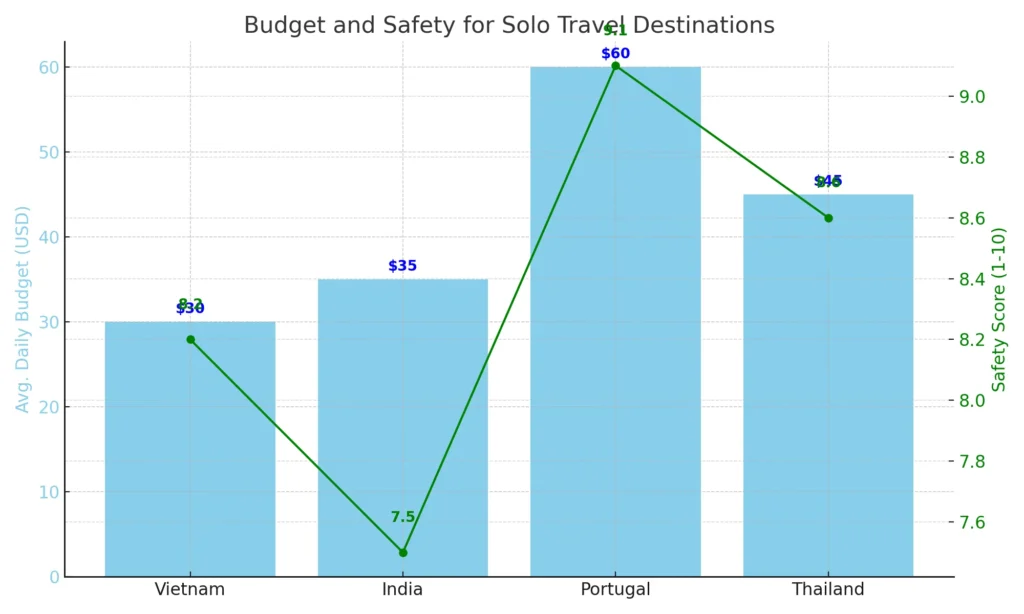Sustainable travel is no longer just a trend. It’s a movement. A choice many travelers are making consciously in 2025, and for good reason. The world is changing fast, and while adventure still calls, the way we explore matters more than ever.
While wandering through Kamla Nehru Ridge Delhi early this year, I noticed something different. More people were walking or cycling, carrying reusable bottles, respecting quiet zones, and genuinely caring about their footprint. That got me thinking — what other places offer this balance of beauty and responsibility?
1. Bhutan – The Kingdom That Measures Happiness
Bhutan doesn’t just protect its mountains and forests — it celebrates them. Nestled between India and China, this Himalayan nation charges tourists a daily fee, not to profit, but to manage impact. That move has worked wonders. Clean air, zero traffic chaos, and locals who care deeply about their land make it feel almost untouched.
The best part? Everything here, from the architecture to farming, follows sustainable practices. Even in hotels, hot water is solar-powered, and plastic is rare.
2. Slovenia – Europe’s Green Jewel
Ljubljana, the capital of Slovenia, banned cars from its city center a decade ago. In their place? Bikes, electric shuttles, and open spaces that feel fresh and free. The whole country is like that — compact, green, and easy on the senses.
Lakes like Bled and Bohinj shimmer without a single plastic bottle floating nearby. Locals serve farm-to-table meals, often grown in backyard gardens. It’s not just travel; it’s a reset.
3. Costa Rica – Rainforests Done Right
If you’re drawn to the wild, Costa Rica offers a front-row seat — but on nature’s terms. Zip-lining, jungle hikes, and turtle spotting are all organized in a way that respects wildlife.
The country runs on almost 100% renewable energy. Hotels here blend into the forest, not bulldoze it. Even surf schools talk about ocean health as much as technique.
4. Japan’s Nakasendo Trail – Walking Through Time
Far from Tokyo’s lights, the Nakasendo Trail winds through forested mountains and sleepy villages. It’s a walk through history. The inns (ryokans) are family-run, the meals local and seasonal, and plastic? Almost nonexistent.
You carry your own waste, rest at simple teahouses, and sleep in wooden homes where tatami mats meet paper walls. It’s not just eco-friendly — it’s deeply humbling.
5. Kamla Nehru Ridge Delhi – A Quiet Oasis in a Busy Capital
Right in the heart of one of India’s busiest cities, Kamla Nehru Ridge Delhi feels like a pause button. Birds flutter across banyan branches. Narrow trails wind between colonial-era ruins and natural thickets. No honks. No crowds. Just nature.
Locals often use it as their morning escape, but it’s also a teaching space — where city children learn about native trees and migratory birds. If more cities had spaces like this, urban travel would feel a lot less overwhelming.
6. New Zealand – The Gold Standard of Nature Travel
New Zealand has long protected its lakes, fjords, and volcanic peaks. But what makes it stand out now is how everyone — from tour operators to locals — contributes. Trails are maintained by volunteers, trash is practically nonexistent, and signs remind you to respect the Māori connection to land.
In places like Wanaka and Abel Tasman, you’ll find solar-charged water taxis, biodegradable trail markers, and composting toilets — all working silently in the background.
7. Portugal’s Alentejo – The Unsung Green Region
Beyond Lisbon and Porto lies a slow, sun-drenched region called Alentejo. Olive groves stretch to the horizon, interrupted only by cork oak forests. Many small villages here have embraced eco-tourism quietly.
Solar-powered guesthouses, farm-stay experiences, and hands-on wine-making fill your days. Even your meals come straight from the soil beneath your feet.
Realistic Comparison Table of Eco-Friendly Travel Spots
Here’s a simple table I made during my planning phase. It helped me pick spots that balanced nature, access, and values.
8. Scotland’s Highlands – Wild, Free, and Protected
The Scottish Highlands don’t need much promotion — just standing in their stillness is enough. What’s impressive is how protected they are. Wild camping is legal, but respectful. Locals guide you to leave no trace.
Sheep graze freely, and even the distilleries now talk about their water use and carbon impact. It’s a land that shows how ancient landscapes can teach modern lessons.
9. Kerala’s Backwaters – Floating Towards Clean Waters
Many think of houseboats, but Kerala’s newer focus is on low-impact cruising. Solar boats now glide through Alleppey’s waters. Locals have banned plastic in many backwater areas.
You’ll find homestays that compost, serve only what’s in season, and even teach you how to cook without waste. That’s the Kerala I remember — gentle, generous, and grounded.
10. Canada’s Yukon Territory – Nature at Its Wildest
The Yukon is vast and untamed. But it’s also fragile. That’s why the local First Nations communities take the lead in eco-tourism here. You won’t find chain hotels. Instead, there are cabins built with reclaimed wood and stories told around fires.
Northern lights blaze above, and the land feels sacred. It’s a reminder that sometimes, being a traveler means listening more than doing.
Final Thoughts
Sustainable travel doesn’t mean giving up adventure. It means choosing experiences that don’t steal from tomorrow. Whether you’re standing quietly in Mutiny Memorial in Delhi Cantonment or sipping wine under Portugal’s cork trees, it’s about connection — with land, people, and purpose.
In 2025, the best destinations won’t just wow you with views. They’ll stay with you because they matter.









Leave a comment